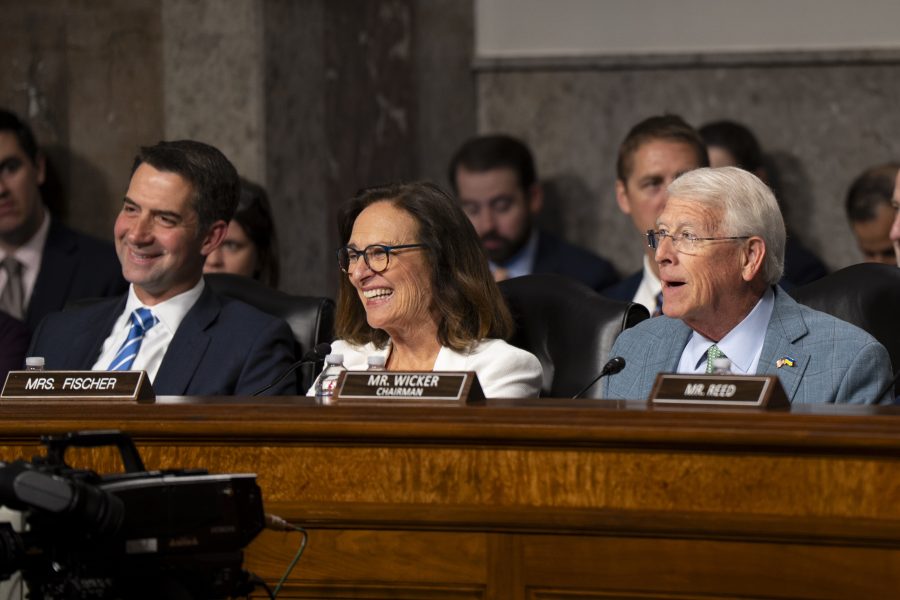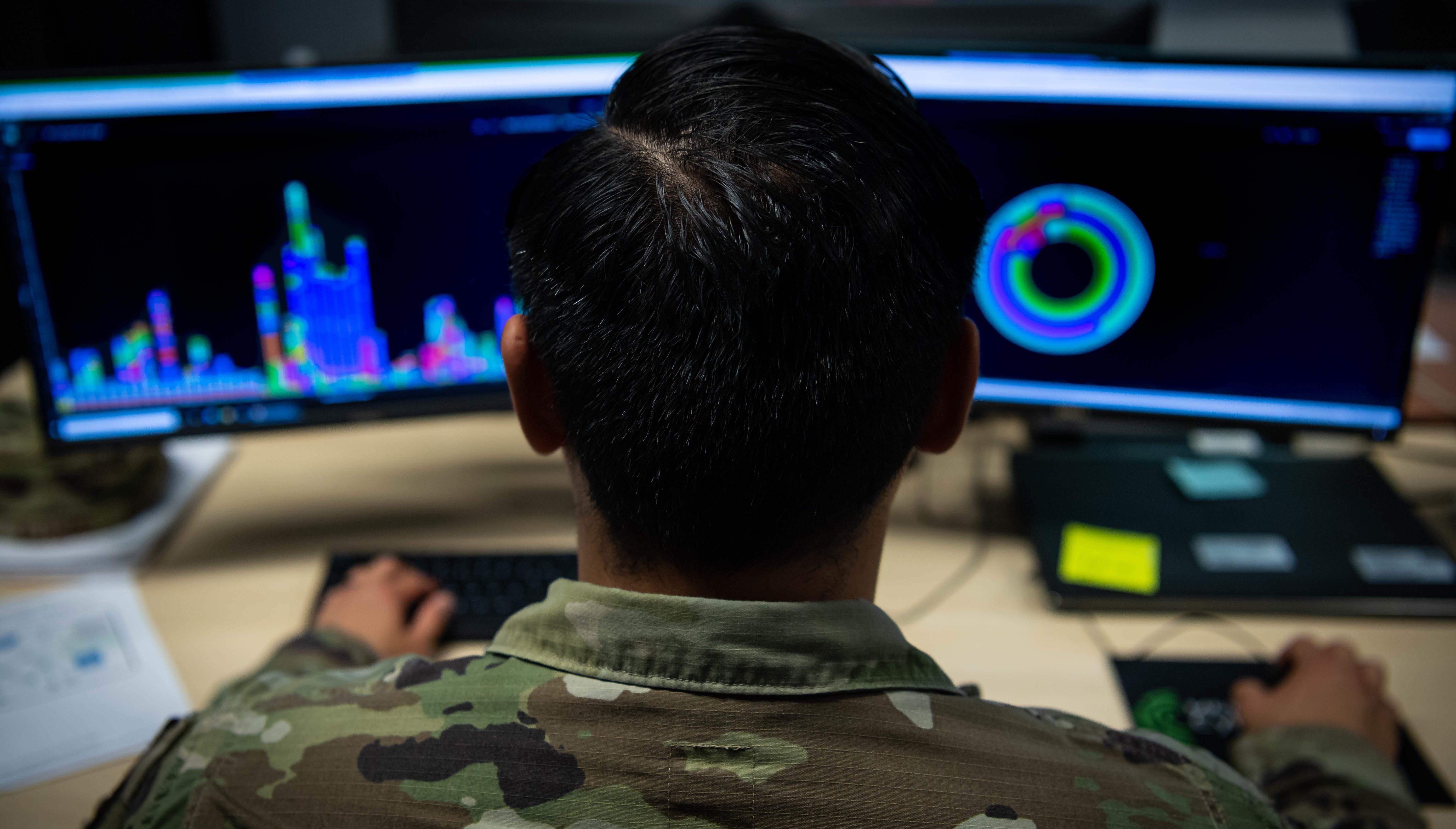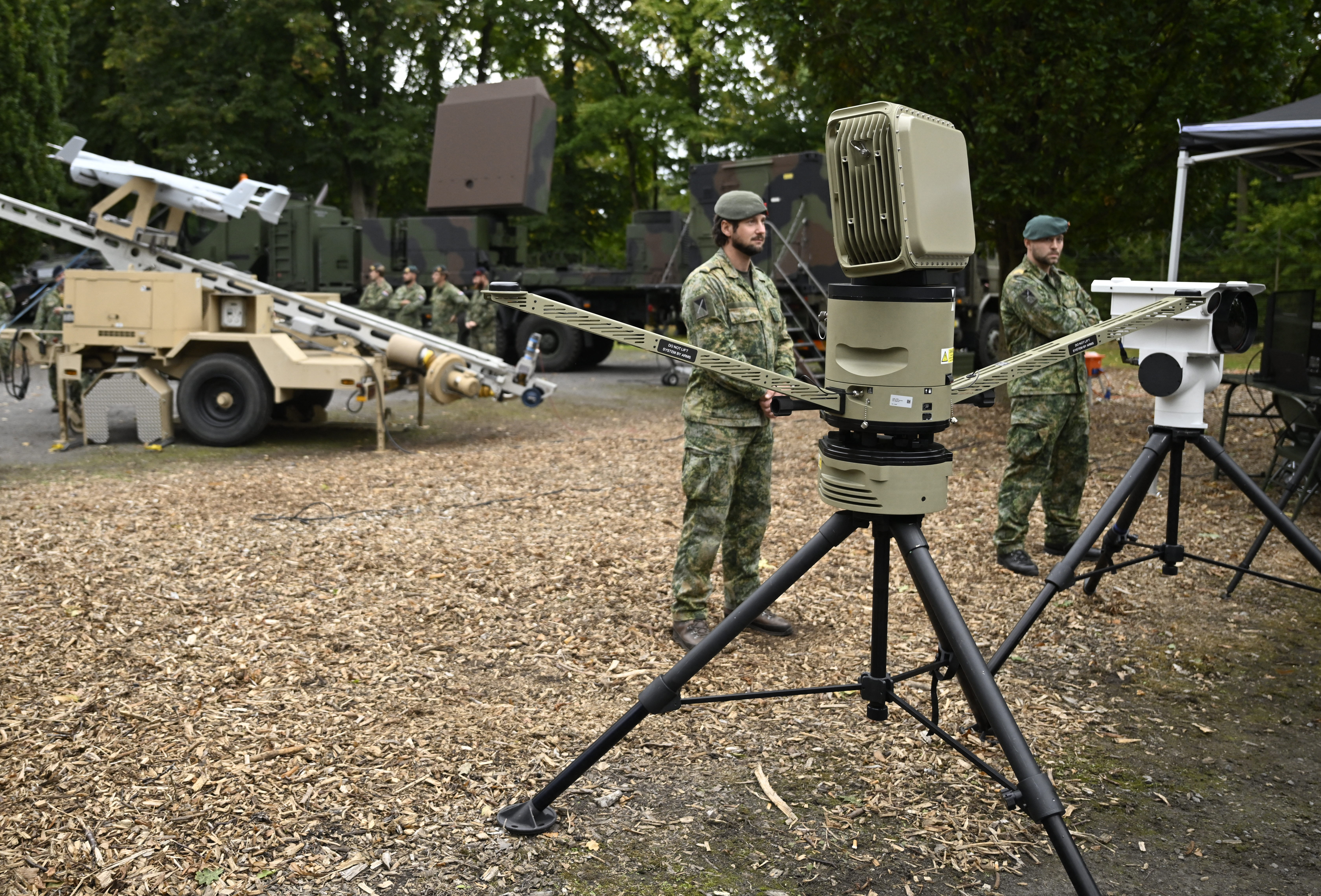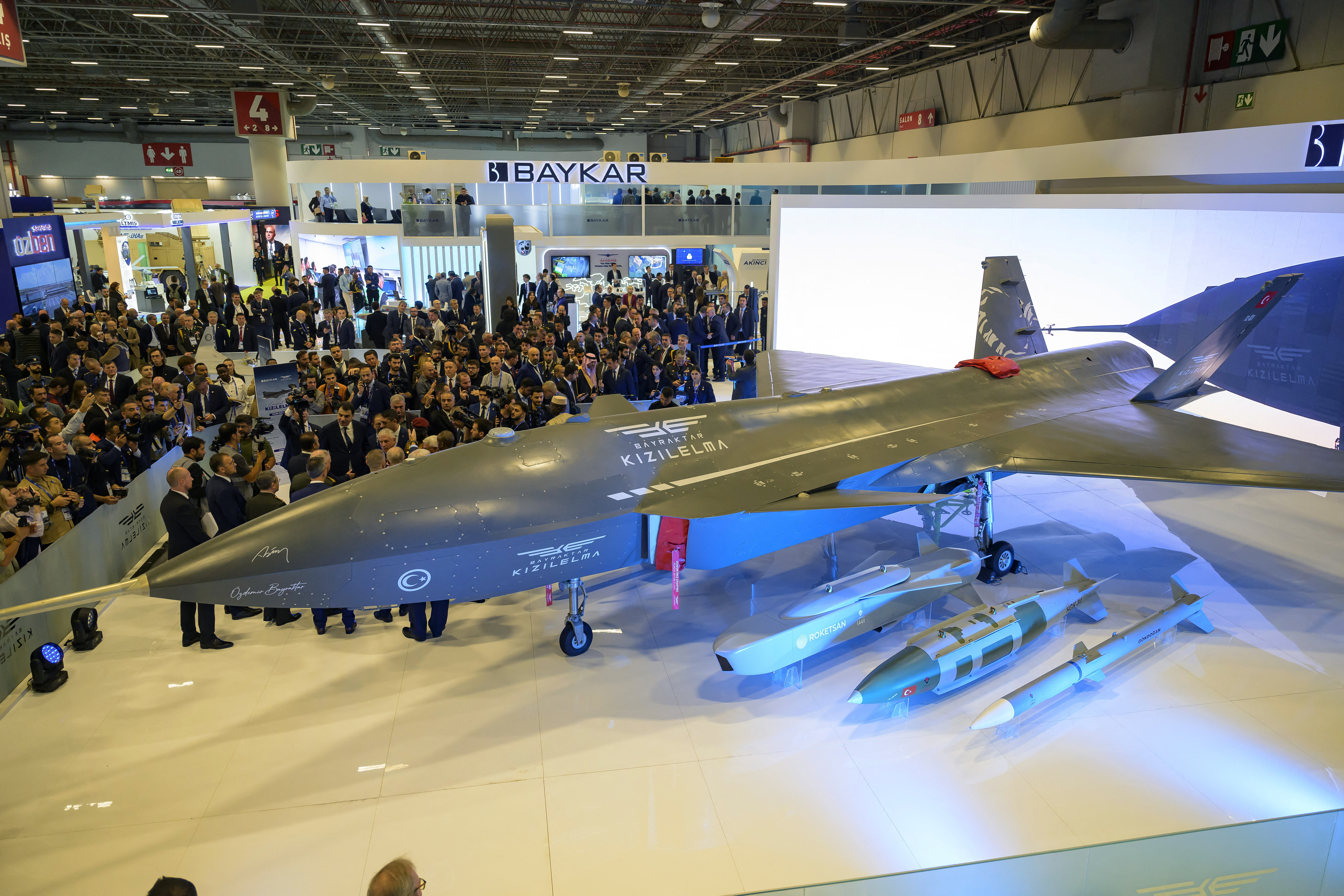
The Senate Armed Services Committee this week released the full text of its version of the 2026 defense policy bill—often referred to as the National Defense Authorization Act—that would allow the Air Force and Space Force to spend billions of dollars more than the services had sought for next year.
The $915 billion legislation, which green-lights at least $221 billion for the Department of the Air Force in the fiscal year that begins Oct. 1, bolsters aircraft purchases and research-and-development programs—including major boosts to top-priority acquisitions like the E-7 Wedgetail airborne target-tracking jet and Sentinel ground-based nuclear missile—while putting new guardrails on the military’s plan to retire certain workhorse planes.
The total sum is likely around $46 billion higher when accounting for troop pay and other personnel funding that isn’t broken out by service in the legislation.
The Air Force and Space Force are seeking $211 billion through the typical annual funding process as part of a 17 percent increase over the previous year’s budget. The services secured the remainder of their $250 billion request for 2026 through the sweeping tax-and-spending package known as the “One Big, Beautiful Bill” that was signed into law July 4.
Senators saw this year’s defense policy bill as a springboard to build upon what critics argue is an anemic annual funding plan that relies too heavily on the one-time money offered in the One Big, Beautiful Bill. For instance, the committee approved nearly $61 billion for Air Force procurement and $57 billion for its research and development initiatives—$3 billion and $5 billion more than the Trump administration wanted, respectively.
In contrast, the House Armed Services Committee offered fewer increases than its Senate counterpart—and in some cases, shrinking programs. The House’s draft would allow the Air Force and Space Force to spend $211.3 billion before adding in military personnel dollars.
Senators are pushing for a 6 percent larger development budget and 12 percent bigger procurement budget for the Defense Department than House lawmakers, according to an analysis by the consulting firm Capital Alpha Partners.
Lawmakers on both sides of Capitol Hill will have to agree on a final dollar amount, a process that could end up tempering the Senate’s more expensive expectations.
Byron Callan, a defense analyst at Capital Alpha Partners, suggested July 17 there’s a 25 percent chance that the Senate’s proposed increases become law.
“Despite bipartisan support for higher defense spending evidenced in the SASC vote of 26-1 in favor of its markup, further increases to defense without increases to non-defense spending may face tougher sledding,” Callan wrote in a newsletter. “Regular appropriations, which entail the potential use of cloture and the need for 60 votes, will be a factor in the Senate.”
Here are some provisions to watch as the two bills move forward.
E-7 Wedgetail
Support among lawmakers appears to be growing to continue the Air Force’s pursuit of an E-7 Wedgetail airborne early warning fleet. The Senate bill would add $700 million for E-7 prototyping, bringing next year’s funding to almost $900 million total—more than four times as much money as the Air Force projected last year it would need in 2026. The House bill added nearly as much, at $600 million.
Senators also slashed $1.5 billion that the Pentagon sought to purchase more Navy E-2D Hawkeye planes to perform the airborne target-tracking mission, rather than buy a new fleet of 26 Wedgetails. Defense officials have suggested that five Hawkeyes could fill in for the Air Force’s dwindling airborne early-warning and battle management fleet until satellites are ready to take on the job, while critics argue the Hawkeyes cannot provide the combatant command coverage provided by Air Force assets.
Fighters
The two bills’ text offers insight into each committee’s vision for the Air Force fighter fleet. Senators are pushing the Air Force to buy 34 F-35A Lightning II jets in 2026—a plan not echoed in the House—instead of the 24 the service requested. Lawmakers also want to see a plan for the government to own more of the F-35’s proprietary data so it can more easily communicate with older aircraft like the F-22 Raptor and future fighters like the next-generation F-47.
The committee authorized another $500 million for F-47 development, citing a “misaligned budget request,” to bring the jet’s budget to $3.1 billion next year. The House did not.
And the bill adds $678 million, for a total of nearly $790 million, to the Collaborative Combat Aircraft program that is designing drone wingmen to accompany fighter pilots into war. It’s unclear whether the boost is meant to mirror the same amount the project received in the reconciliation bill earlier this month. The House did not include the same plus-up.
Senators likewise look to revise the restriction on how many F-15E Eagles the Air Force can retire, suggesting the service divest of up to 34 jets by the end of fiscal 2027 rather than up to 68 two years later.
Both the Senate and House would limit how many A-10 Thunderbolt II attack planes the service could dump as well. The House bill requires the Air Force to keep at least 162 of the “Warthogs,” while the Senate bill would keep 103 or more.
Missiles
As lawmakers seek more insight into the cost of recent U.S. military operations in the Middle East, the Senate would give the Air Force $1 billion to replenish the weapons used to strike Iranian nuclear facilities in June as well as the munitions used in the campaign against Houthi rebels in Yemen. That sum would also help restore force readiness following those missions, Operation Midnight Hammer and Operation Rough Rider. The House bill doesn’t offer the same.
The Senate pours more money into other missile procurement and development initiatives passed up by the House. For instance, the Senate bill adds $149 million to accelerate design of the Air Force’s new nuclear-tipped Long-Range Standoff Weapon, as well as to create a conventional version of the missile.
And the Air Force’s Joint Air-to-Surface Standoff Missile, a program it shares with the Navy, could spend another $322 million above its request if the Senate gets its way. Air Force JASSM procurement would total $650 million next year for an undisclosed number of weapons under the SASC bill.
Nuclear Forces
Air Force Global Strike Command began managing the service’s nuclear enterprise in 2009. Nearly two decades later, Congress wants to codify the organization’s role and protect it from other commands that could encroach on its job.
Senators would block the Air Force from changing Global Strike’s staff, composition, or responsibilities as the service stands up a new Integrated Capabilities Command to oversee future hardware and software development across the force. What’s more, the Senate bill withholds a quarter of the Department of the Air Force’s 2026 funding until the Secretary of the Air Force reverses those changes to the Louisiana-based command.
The language is a partial rebuke of the service’s effort to streamline how it designs new capabilities rather than fragmenting those projects across multiple commands that oversee them at different stages.
Some critics have argued that strategic platforms are too complicated to be managed by officials outside of the nuclear enterprise, particularly as the Air Force looks to update its entire nuclear arsenal at once.
The House Armed Services Committee likewise designates the four-star Global Strike commander as the sole officer responsible for leading development of nuclear and long-range strike mission requirements, budget proposals, investment plans, and employment concepts.
The Senate also looks to exercise greater oversight over the secretive new B-21 Raider stealth bomber and the Sentinel intercontinental ballistic missile programs, both of which will fall under Global Strike’s purview when they enter operations.
Senators want to require that the B-21 can employ nuclear gravity bombs within 180 days after the fleet is declared ready for initial operations, and the Long-Range Standoff Weapon within two years after the B-21 or the missile achieves initial operations.
Both chambers endorsed the new plane’s $5.7 billion base budget request for 2026, on top of the $4.5 billion the program received earlier this month to speed up production. The Senate would also push the Air Force for more details on how it will transition its bomber force to a mix of planes that carry nuclear and conventional weapons, including at least 100 B-21s, no later than 180 days after the defense policy bill is enacted.
The Raider, designed to slip past enemy air defenses with newer stealth technology than the B-2 Spirit, is slated to enter operations by the end of the decade as the most advanced bomber in the U.S. inventory.
The Senate bill also dictates that Sentinel missiles must be operational by October 2033, and that the Air Force should have no fewer than 400 ICBMs on alert at any given time except when transitioning between the current Minuteman III missiles and the new Sentinel fleet.
Senators would authorize an additional $2 billion, for $4.6 billion in total, for the troubled Sentinel program. The House version of the bill would add just $400 million, totaling $3 billion next year.
The post What to Watch for the Air Force as House, Senate Advance Differing Defense Bills appeared first on Air & Space Forces Magazine.

Air, Budget, Congress, Space, 2026 NDAA, AFGSC, Air Force Global Strike Command, E-7 Wedgetail, HASC, House Armed Services Committee, National Defense Authorization Act, SASC, Senate Armed Services Committee
Air & Space Forces Magazine
[crypto-donation-box type=”tabular” show-coin=”all”]


![AirPods Pro 3 Drop to New $199 Low Price on Amazon [Updated]](https://images.macrumors.com/article-new/2025/12/airpods-pro-3-glitter.jpeg)









